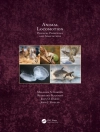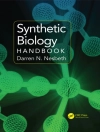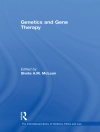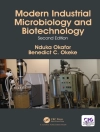These proceedings of the 2018 XIII International Symposium on Spermatology focus on comparative biology, and encourages discussion and the exchange of ideas. The aim of this Symposium was to provide a unique opportunity and bring together scientists from a wide spectrum of research fields – human, domestic animals and other mammals, vertebrates, insects, and plants. The underlying focus is on the function of the spermatozoon – a common feature for sexual reproduction, but extremely varied. By exploring the variability, a better understanding of male reproductive functions can develop. These proceedings address the mechanisms of physiology and pathophysiology, rather than diagnosis and treatment. The symposium featured keynote lectures by invited speakers, followed by presentations on specific aspects of the general topic of the session. Experimental studies are given priority over clinical studies of patient populations. The proceedings compriseboth keynote speakers’ texts and selected free communications. Posters were considered for publication in the proceedings, and the volume includes exhibited materials on the work of prominent spermatologists, highlighting their important past achievements in the field.
Зміст
Section I – Introduction to Spermatology Symposium.- Chapter 1. The XIIIth International Symposium on Spermatology.- Chapter 2. Fifty Years of the Spermatology Symposium.- Chapter 3. Spermatology in Sweden.- Section II – Are Sperm at the Verge of Extinction?.- Chapter 4. Temporal trends in human sperm counts: Findings and implications.- `Chapter 5. Is Decreasing Sperm Concentrations a Sign of a General Decay in Fertility Potential?.- Chapter 6. Environmental toxicants and sperm production in men and animals.- Section III – Sperm DNA – protection and delivery of a complete and undamaged genome?.- Chapter 7. Post-testicular sperm DNA oxidation: what to be afraid of?.- Chapter 8. Sperm as a possible source of transgenerational epimutations and genetic instability.- Chapter 9. Complex population of chromatin-associated proteins identified in mature sperm of the European sea bass (Dicentrarchuslabrax) through high-throughput proteomic analysis.- Chapter 10. Does Cinnamtannin B-1 protects or destabilize sperm DNA? Contradictory results of SCSA® and TUNEL Invited presentations.- Chapter 11. Peripubertal serum dioxin concentrations and sperm methylome of young Russian adults.- Chapter 12. Sperm DNA fragmentation in human split ejaculates.- Section IV – Sperm Competition, Evolution and Sperm-Egg Interaction.- Chapter 13. The sexual cascade: evolutionary dynamics of sperm competition.- Chapter 14. Genotype-phenotype associations in relation to evolution of sperm form and function.- Chapter 15. From mouse to human: New aspects of sperm transport and fertilization using cutting edge technologies.- Chapter 16. First Snapshot of How Sperm Binds the Egg at the Molecular Level.- Chapter 17. The Typical and Atypical Centrioles and Their Potential Roles in the Sperm and Embryo.- Chapter 18. Adaptive modifications of the regulation of sperm motility in the diversification of reproductive modes of amphibians.- Section V – Genetic aspects of sperm production and performance and its effects on the offspring.- Chapter 19. When cilia go bad – the complex genetics of ciliopathies.- Chapter 20. Within-Ejaculate Sperm Selection and its Implications for Assisted Reproduction Technologies.- Chapter 21. Requirements for informative and robust computational measures of sperm motility.- Chapter 22. Effect of cryopreservation on the genome of sperm in animal and humans.- Chapter 23. Mutations in the CFAP-coding Genes Lead to Male Infertility with Multiple Morphological Abnormalities of the Sperm Flagella.- Chapter 24. The mouse-specific Gly-to-Cys mutation in mammalian acrosin is a cause of impairment in proteolytic activity.- Chapter 25. Chemical and genetic approaches to identify C. elegans spermiogenesis-related factors.- Section V -CASA – Advances and Challenges.- Chapter 26. CASA in the clinical andrology laboratory.- Chapter 27. Process and Data Management of Casa in Animal Spermatozoa.- Chapter 28. Relationship between flagellar movement and head trajectory at higher frame rates-is this still a valid approach for CASA?.- Chapter 29. CASA a Suitable tool for epidemiology and reprotox studies.- Section VI -Challenges for Sperm Function In Vitro.- Chapter 30. Common challenges for sperm in vitro- causes and consequences.- Chapter 31. Main effects of in vitro manipulation of spermatozoa.- Chapter 32. Effect of Melatonin on Capacitation and Ca2+ Distribution in Red Deer Spermatozoa.- Chapter 33. Unravelling the signal transduction pathways of novel mitochondrial peroxiporins in activated piscine spermatozoa.- Chapter 34. Prolonged chilled preservation and preliminary investigations of energy production of koala (Phascolarctos cinereus) spermatozoa.- Chapter 35. Sperm motion and metabolism in physiological conditions.- Chapter 36. Gametes collision in fresh water fish: evidences of guidance and selection.- Chapter 37. Lectin-binding pattern changes on the bovine sperm after differently induced process of capacitation.- Section VII -Heterogeneity of Sperm Morphology and Laboratory Techniques to Overcome Assessment Challenges.- Chapter 38. Have we conquered sperm morphology analysis in different mammalian species as analysed by CASMA?.- Chapter 39. Progress with sperm morphology evaluation after the strict criteria prognosis groups era due to the introduction of the new lower reference limit values for semen parameters of the 2010 WHO manual.- Chapter 40. A structured assessment for the assessment of human sperm morphology.- Chapter 41. On the Indispensability for Standardization of the Basic Examination of Human Semen.- Chapter 42. A simple but dramatic technical improvement in the Diff Quik stain protocol used for preparing specimens for sperm morphology evaluation (Improved Diff Quik stain protocol for preparation of sperm morphology evaluation specimens).- Section VII – Fertility and Infertility.- Chapter 43. Intracellular Viruses Identification in Sperm Assay of Patients with Fertility problems.- Chapter44. Association between vitamin D intake and vitamin D status with semen parameters among young men in Southern Spain.- Chapter 45. Single cell analysis of intracellular calcium signalling of patient sperm and its relation to IVF success.- Chapter 46. Sperm from a patient with a homozygous in-frame deletion in CATSPERE lack functional Cat Sper expression and fail to fertilise at IVF.- Chapter 47. Changes in pattern of protein phosphorylation in bull testicular and epididymal sperm.- Chapter 48. Proteomics and biomarker identification in improved sperm motility parameters after 4 h of ejaculatory abstinence.- Chapter 49. HSP90A may control spermatogenesis of Asian elephant (Elephas maximus) cryptorchid testes.- Chapter 50. Improved sperm function in human sperm subpopulations: a model for studying subfertility.- Chapter 51. Absence of BSP protein have not important effect on male infertility.
Про автора
At the time of the Symposium all editors were active at ANOVA (Andrology, Sexual Medicine, Trans Gender Medicine), Clinic of Endocrinology, Karolinska University Hospital, and Department of Medicine Huddinge, Karolinska Institutet, Stockholm Sweden. Ulrik Kvist, M.D. Ph.D. and Associate Professor, is well-known for a long term scientific contribution especially concerning sperm chromatin stabilization and documented activity in Spermatology. Lars Björndahl, M.D. Ph.D, Senior consultant physician and Head of ANOVA Andrology Laboratory, started as post graduate student with Ulrik Kvist as supervisor and has become leading in quality development in basic human semen examination within the European Society of Human Reproduction and Embryology, Special Interest Group in Andrology, WHO editorial committee for the manual on semen examination and project leader for an ISO standard on Basic Semen Examination. Rebecka Holmberg, BMS and Ph.D. is highly experienced in basic semen analysis and expert on quality management of andrology laboratories. John Flanagan, Ph.D. and Associate Professor in molecular endocrinology, is expert in molecular investigations of male reproductive organ functions.












